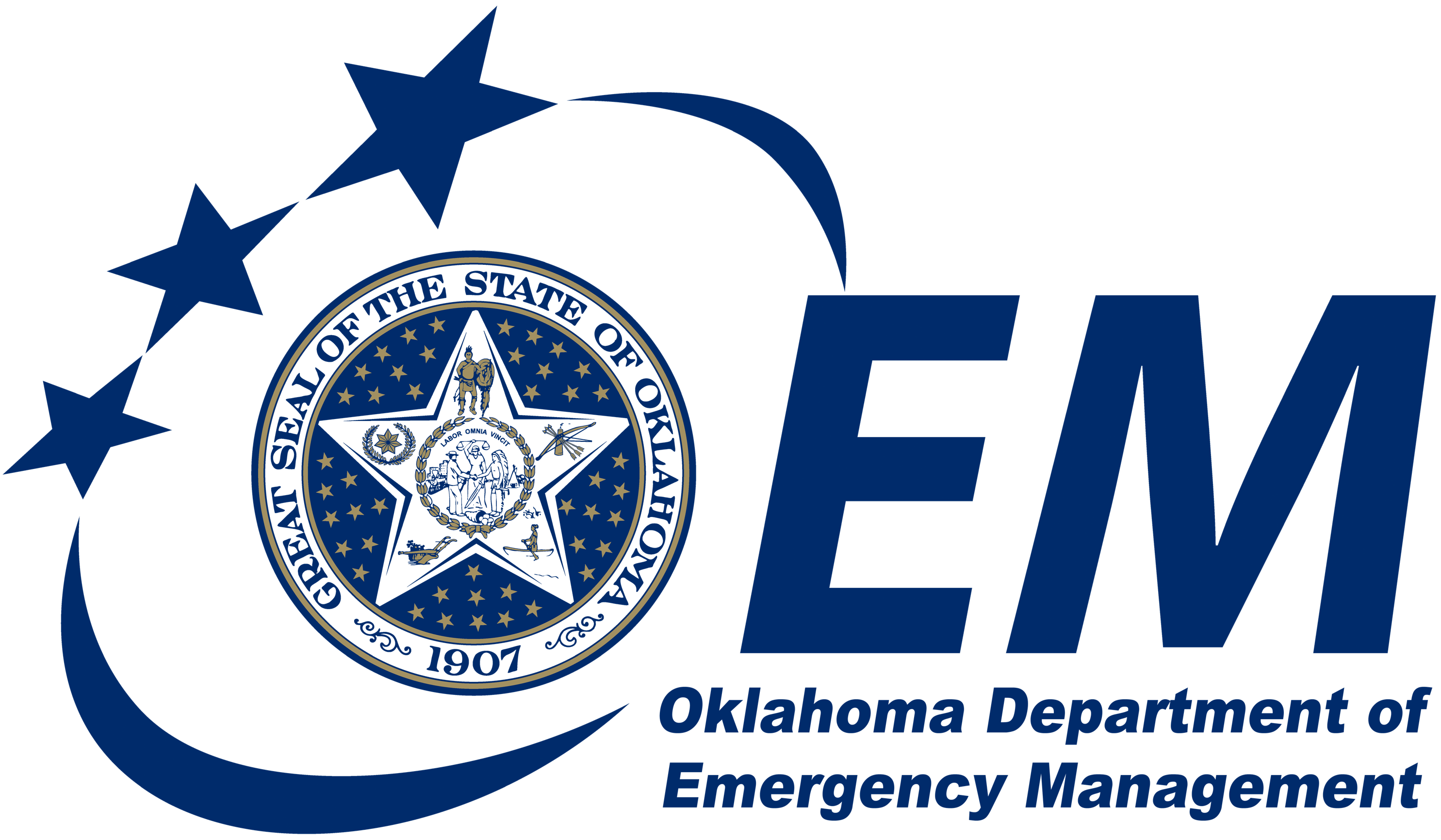WILDFIRES IMPACTING STATE
Situation Update
Oklahoma Department of Emergency Management
Situation Update 2
March 11, 2011 8:30 p.m.
Due to today’s severe wildfires, the State Emergency Operations Center remains at Level Three activation, which involves extended hours for key personnel. The Oklahoma Department of Emergency Management (OEM) is in contact with emergency managers in the affected areas. Additionally, OEM continues to work with the Oklahoma National Guard, Oklahoma Highway Patrol, Oklahoma Forestry Division, Oklahoma State Department of Health, Oklahoma Climatological Survey, National Weather Service, American Red Cross and the Salvation Army.
STATE OF EMERGENCY
A State of Emergency remains for all 77 Oklahoma counties as declared by Gov. Mary Fallin earlier today. Under the executive order, state agencies can make emergency purchases and acquisitions needed to expedite the delivery of resources to local jurisdictions. The declaration also marks a first step toward seeking federal assistance should it be necessary.
WEATHER CONDITIONS
A cold front continues to move southward into the state and will be near I-44 on Saturday. Temperatures will be in the low 70s in southern areas of the state and generally low to mid 60s in northern Oklahoma. While the winds won’t be as strong and relative humidity not as low, fire danger remains a concern across the state. Winds will be much lighter than today with relative humidity values improved as well.
FIRES
More than two dozen fires have been reported statewide including in Arkoma, Beggs, Choctaw, Duncan, Goldsby, Harrah, Lindsey, McAlester, Midwest City, Norman, Oklahoma City, Ratliff City, Shawnee and Stroud. Fires were also reported in areas of Atoka, Caddo, Carter, Comanche, Creek, McClain, Okfuskee, Pittsburg and Pottawatomie counties. Some fires required evacuations.
Oklahomans are reminded to report any suspicious wild land fire activity to the Arson Tip Line 1-866-662-7766 (1-866-NO-ARSON).
MASS CARE
The American Red Cross has opened an Evacuation Center at Harmony Christian Church, 7100 S. Choctaw Road in Choctaw. The Salvation Army is assisting with food services.
DAMAGES
The following preliminary damage reports were received from local emergency managers.
Choctaw/Midwest City area -- 15 homes destroyed
Harrah – 12 homes destroyed
Shawnee – 4 homes destroyed and 10 out-buildings destroyed
RESOURCE REQUESTS
The following resources were deployed through the State EOC. The Oklahoma National Guard provided water drops via Blackhawk helicopters in Beggs, Goldsby, Harrah, Newcastle and Shawnee. The Oklahoma Forestry Division 42 bulldozers, 42 type 6 brush trucks and 90 forestry personnel.
FEDERAL ASSISTANCE
A Fire Management Assistance Grant (FMAG) through the Federal Emergency Management Agency (FEMA) has been approved for the Harrah Fire. The FMAG will provide will provide recovery assistance to fire departments and other emergency organizations to help cover expenses related to responding to the fire. OEM has applied for FMAGs on fires in several other jurisdictions as well and is awaiting approval.
PRICE GOUGING STATUTE IN EFFECT
Oklahoma’s price gouging statute remains in effect in all of Oklahoma’s 77 counties due to the State of Emergency. The price gouging statute prohibits an increase of more than 10 percent in the price of most goods and services when a State of Emergency has been declared. Anyone who suspects price gouging is urged to contact the Attorney General’s Consumer Protection Unit at (405) 521-2029.
DIAL 211
For Oklahoma residents seeking non-emergency disaster or health and human service information, please contact your local 2-1-1. Services are available 24 hours a day by dialing 2-1-1 from your home or cellular telephone. Please only call 911 for emergencies.
STAY SAFE
The Oklahoma State Department of Health reminds Oklahomans of the health threat represented by wildfire smoke. Smoke from wildfires is a mixture of gases and fine particles from burning trees and other plant materials. Smoke can hurt your eyes, irritate your respiratory system, and worsen chronic heart and lung diseases.
How to tell if smoke is affecting you
Smoke can cause—
- Coughing
- A scratchy throat
- Irritated sinuses
- Shortness of breath
- Chest pain
- Headaches
- Stinging eyes
- A runny nose
- Asthma exacerbations
If you have heart or lung disease, smoke might make your symptoms worse.
People who have heart disease might experience—
- Chest pain
- Rapid heartbeat
- Shortness of breath
- Fatigue
Smoke may worsen symptoms for people who have pre-existing respiratory conditions, such as respiratory allergies, asthma, and chronic obstructive pulmonary disease (COPD), in the following ways:
- Inability to breathe normally
- Cough with or without mucus
- Chest discomfort
- Wheezing and shortness of breath
When smoke levels are high enough, even healthy people may experience some of these symptoms.
Know whether you are at risk
If you have heart or lung disease, such as congestive heart failure, angina, COPD, emphysema, or asthma, you are at higher risk of having health problems than healthy people.
Older adults are more likely to be affected by smoke, possibly because they are more likely to have heart or lung diseases than younger people.
Children are more likely to be affected by health threats from smoke because their airways are still developing and because they breathe more air per pound of body weight than adults. Children also are more likely to be active outdoors.
Protect yourself
Limit your exposure to smoke. Following are ways to protect your health:
Pay attention to local air quality reports. Listen and watch for news or health warnings about smoke. Find out if your community provides reports about the Environmental Protection Agency's Air Quality Index (AQI). Also pay attention to public health messages about taking additional safety measures.
Refer to visibility guides if they are available. Not every community has a monitor that measures the amount of particles that are in the air. In the western part of the United States, some communities have guidelines to help people estimate AQI based on how far they can see.
If you are advised to stay indoors, keep indoor air as clean as possible. Keep windows and doors closed unless it is extremely hot outside. Run an air conditioner if you have one, but keep the fresh-air intake closed and the filter clean to prevent outdoor smoke from getting inside. If you do not have an air conditioner and it is too warm to stay inside with the windows closed, seek shelter elsewhere.
Do not add to indoor pollution. When smoke levels are high, do not use anything that burns, such as candles, fireplaces, or gas stoves. Do not vacuum, because vacuuming stirs up particles already inside your home. Do not smoke, because smoking puts even more pollution into the air.
Follow your doctor's advice about medicines and about your respiratory management plan if you have asthma or another lung disease, Call your doctor if your symptoms worsen.
Do not rely on dust masks for protection. Paper "comfort" or "dust" masks commonly found at hardware stores are designed to trap large particles, such as sawdust. These masks will not protect your lungs from smoke. An “N95” mask, properly worn, will offer some protection. For more information about effective masks, see the Respirator Fact Sheet provided by CDC’s National Institute for Occupational Safety and Health.
For more information about wildfire safety, visit the following websites:
###
Next Situation Update: As conditions warrant


